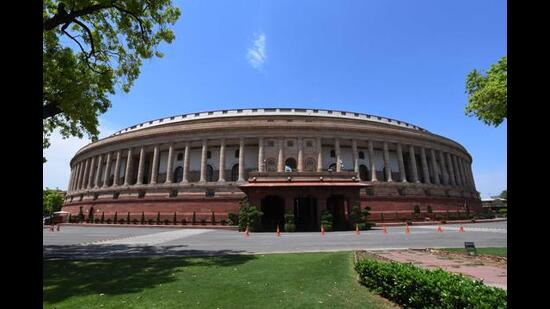Don’t delay the passage of the anti-trafficking bill 2021
It would help understand human trafficking through intersectional analysis and beyond the lens of gender-based violence while locating anti-trafficking work as part of a globalised movement
India desperately needs an exclusive legislation on human trafficking, but the Trafficking in Persons (Prevention, Care and Rehabilitation) Bill 2021, an exhaustively drafted document, is awaiting parliamentary approval. The crime is covered under many laws, but even the latest definition given under Section 370 of the Indian Penal Code is limited. Notwithstanding the criticism of some aspects of the bill, it is the need of the hour. Trafficking in any form is prohibited under Article 23 of the Constitution.

Yet, this modern-day slavery is growing in intensity, dimension, and spread. A 2017 International Labour Organization (ILO) report states that more than 40 million people are enslaved for exploitation. The spectrum of the purpose of exploitation ranges from sex slaves to child soldiers. The report estimates that in the preceding five years, 89 million people were victimised. Its classification projects that out of 40 million, 25 million were exploited in forced labour and 15 million were pushed into forced marriage to which they had not consented, and out of this, 5.7 million were children. For every 1,000 adults, 5.4 were victims, and for 1000 children, 4.4 children were victimised.
The UNODC 2020 Global Report estimates that in 2018, for every 10 victims of trafficking detected globally, about five were adult women and two were girls. About one-third of the overall detected victims were children. So, there is a commonality in UNODC, and ILO reports that around 70% of victims are females (adult and child included). UNODC observes that “invisibility’ of some sectors helps to hide trafficking for forced labour.”
As per India’s National Crime Record Bureau, 2278, 2208, and 1714 cases of trafficking were reported in 2018, 2019, and 2020 respectively. 85.2% of the cases have been charge-sheeted. In 2020, 4,709 persons were victimised, out of which 2,222 were children, including 1,377 boys and 845 girls. It also projects that 2151 children were rescued out of which 801 were girls. Among adult victims, 535 were males, and 1952 were females.
If we analyse the data, it seems to be misleading and untenable. The factual situation would narrate a different story. The figure of merely 845 girls being victimised in the country in one year reflects flaws in reporting. If we see the data projected in the NCRB report, there is almost no trafficking in India.
While ILO says, out of 1,000 persons, 5.4 persons are victimised, the data of NCRB says out of 1.3 billion populations, only 4,709 have been victimised. This is a huge mismatch to the projected magnitude of human trafficking. This anomaly has to be understood. This huge gap in reporting could be attributed to the lack of an all-encompassing Act. The revised definition in the Bill would, to a great extent, clear doubts about what constitutes trafficking.
The passing of the Bill should be followed by proper research and a study to understand the domestic and global situation, with reference to cause and effect, dimensions beyond the conventional definition, the vulnerability and attempts to alleviate it, the methods used by a trafficker to sustain captivity and role of stakeholders in prevention, protection, and prosecution, and other issues.
It would help understand human trafficking through intersectional analysis and beyond the lens of gender-based violence while locating anti-trafficking work as part of a globalised movement.
But for sure, an Act would help stakeholders and government and non-government organisations put a concerted effort to combat modern-day slavery.
Veerendra Mishra , IPS, is a Humphrey Fullbright Fellow; Senior Fellow Sanrachna, Honorary Adjunct Prof at Jindal Global University.
The views expressed are personal.





